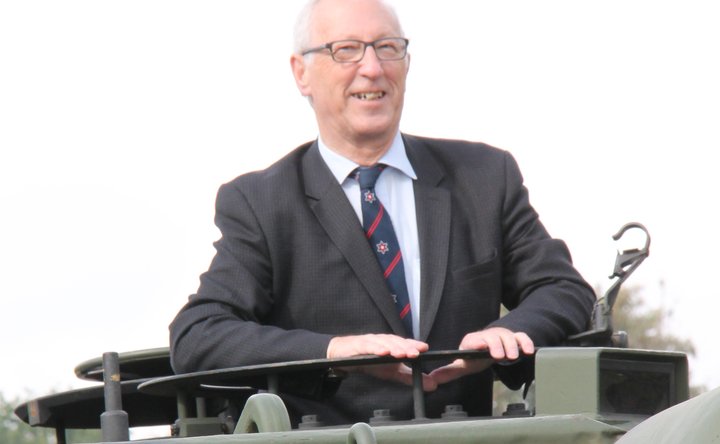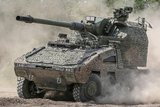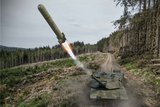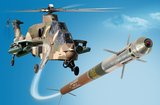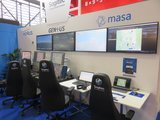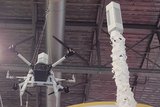Will Ukraine war air defence experience unlock new markets for Korkut gun system?
Aselsan's Korkut twin 35mm Air Defence Gun System integrated on an Otokar Arma 8x8 platform, showing the roof-mounted sensor pack including radar. (Photo: author)
Aselsan’s Korkut twin 35mm Air Defence Gun System (ADGS) integrated onto an Otokar Arma 8x8 IFV chassis is being shown for the first time at Eurosatory 2024.
There is no similar twin 35mm system on the market. The German Gepard, based on a much modified Leopard 1 tank, was deployed by Belgium, Germany and the Netherlands but these were phased out of service many years ago.
Ukraine has, however, obtained a number of Gepards which have been successful in countering Russian drones, and large numbers of heavy machine guns have also been used for C-UAS work.
Service planners following the
Already have an account? Log in
Want to keep reading this article?
More from Eurosatory 2024 | View all news
-
![India expands ammunition production with Adani–Thales collaboration]()
India expands ammunition production with Adani–Thales collaboration
Adani Defence & Aerospace has teamed up with Thales Belgium to manufacture and assemble NATO-standard 70mm calibre ammunition, strengthening India's self-reliance in defence production.
-
![Naval artificial intelligence demonstrated in new applications in Paris]()
Naval artificial intelligence demonstrated in new applications in Paris
The prevalence of AI-enabled solutions from startups and major defence company at this year’s Eurosatory highlighted both the potential benefits and trust-related challenges associated with its adoption.
-
![Thales completes delivery of upgraded command and staff trainer to Polish Land Forces]()
Thales completes delivery of upgraded command and staff trainer to Polish Land Forces
Thales unveiled its CAST system at Eurosatory 2024 showcasing its advanced capabilities in enhancing situational awareness and decision-making skills.
-
Sogitec combines Sword, Genius and HORUS for virtual/constructive demonstrator
The French company has integrated its Genius UAS and HORUS helicopter simulators with MASA’s Sword constructive simulation as it aims to achieve operational orders by the end of 2025.
-
![Saab releases details on Sirius Compact EW sensor]()
Saab releases details on Sirius Compact EW sensor
Sirius Compact can be operated as a stand-alone unit or as part of a network with several sensors typically supporting Ground Based Air Defence with target information.
-
![Thales takes new HF communications system from ship to shore]()
Thales takes new HF communications system from ship to shore
The HF XL family was unveiled at last month’s Eurosatory 2024 with the company pushing the system’s capability of searching out unjammed channels or channels with the highest data rate available.








